Amid the excitement of the upcoming Who’s Next event at Porte de Versailles (Paris), BRUT ICON emerges as a showcase of cutting-edge creative innovation within a unique space.
Is TikTok killing Instagram ? A conference by the Fédération du Prêt-à-Porter Féminin at Who's Next
Last September, the Fédération Française du Prêt-à-Porter Féminin enhanced Who's Next with talks and workshops on digital marketing in fashion. Here's a look back at the ‘Did TikTok kill Instagram? Three experts in fashion and social media discuss community, authenticity, resilience and engagement.
Instagram was the heart of the party, a digital magazine of its own which had overthrown Facebook and blogs by means of polished filters and clever hashtags. But its sponsored content and glamorous influencers have ended up losing authenticity. Have we absorbed too much Instagram content, to the point of nausea ? Or has the tide simply turned, driven by TikTok’s wave of spontaneous, authentical and accessible content that capture consummers’ attention by storm ? What are the new rules governing social media today ?
A profound rupture
For Romain Tardy, founder of Bureau Tardy and CEO of Marcia Wear, TikTok has created a profound rupture in the way we consume digital content. “What TikTok shows us is no longer based on who we follow, but on our own interests, via its ‘for you’ page. It gives a brand the ability to reach a wider audience than the one it initially targets.” The key to capturing attention ? Short, dynamic and entertaining content that contrasts with Instagram’s polished aesthetic. One no longer needs to build a community in order to succeed on TikTok – just be yourself and capitalize on a trend, however niche it may be. Cottage Core, Brat Summer and Very demure / Very mindful are perfect examples. On TikTok, aesthetics, celebrities, concepts and human beings all coexist on the same level, and everyone can have their share. For brands, it’s an opportunity to take a step back from the perfect world of Instagram and institutional campaigns : all it takes is a clever video thrown into the flow of a successful trend.
A flexible strategy
“This approach works very well in France, where TikTok is not as saturated as it is in the U.S.” says Flàvia Zerbinato, a communications and influencer marketing expert for Melissa and Typologie. “In the U.S., it has become a search engine of its own, affecting even political scenarios.” For her, no brand today can omit TikTok from its social media strategy, but Instagram remains essential. “Two things have to be taken in account : the goal of the campaign and the positioning of the brand. For example, Typologie’s aesthetic and minimalist branding are perfect for Instagram, but for its conversion objectives, betting on TikTok influencers and the TikTok shop [a shopping feature that enables consumers in some countries to purchase products via TikTok] is very effective. At Melissa, we’re more focused on cultural positioning, brand awareness and engagement. We still use influencers, but in a different way.”

Théodore Charignon co-founded the streetwear brand Veryrare, an Instagram success. For him, it’s all about keeping it human with his community. “It’s easy to forget that followers are actual people. At Veryrare, we try not to lose sight of the fact that these people are interested in us, and that we need to interact with them. We do so via quizzes, giveways...” With 80% of sales generated in the U.S., TikTok almost comes as an obstacle for the Paris-based brand. “Content distribution there is much more segmented according to where you post from, so it’s harder to reach an American audience from Paris than it is via Instagram.” He also mentions TikTok’s political issues, threatened by a U.S. ban if China doesn’t find an agreement to sell the app to a local market.
Luxury needs to keep up
Should brands bet on Instagram or TikTok ? Both, without a doubt. As Romain Tardy notes, what brand today would want to deprive itself of the billions of potential TikTok customers ? “For a digital-native brand, social media represents 40% of sales. For a more traditional wholesale brand, it is still 20%.” That is, if you understand what’s at stake. Campaigns, desirability and making people dream have always been the essence of the luxury industry, but it is authenticity and spontaneity that consumers crave today, so they can identify with the products they covet. “It’s vital to take these changes into account. You have to adjust your strategy in real time and be open to the time’s mood. Loewe had done it brilliantly, proving that savoir-faire and entertainment are not mutually exclusive.” Unlike other major brands, still a little afraid of losing control of their content.

Whether traditional or digital-native, fashion or beauty, no brand can do without social media today. As for choosing between TikTok and Instagram, the cleverest ones will do both, each with a tailored strategy. For brands with very defined processes, it’s all about being resilient: in order to keep track of a highly saturated market, they’ll have to adapt in real time to ongoing changes dictated, hand in hand, by the leading duo of consumers and apps.
Similar articles
-
 BRUT ICON for Who’s Next: Highlight on the rising talents of contemporary creation
BRUT ICON for Who’s Next: Highlight on the rising talents of contemporary creation -
 The Milano Fashion & Jewels
The Milano Fashion & JewelsAt this year's Bijorhca, Milano Fashion & Jewels will be showcasing its excellence in made-in-Italy jewellery. Four brands will be on hand to showcase the art of Italian jewellery.
-
 Italian creativity shines bright with Who’s Next and ITA Institution
Italian creativity shines bright with Who’s Next and ITA InstitutionAt the heart of timeless elegance, sprezzatura, and unique artisanal expertise, Italy stands out on the international creative stage for its dual spirit—both rebellious and innovative, yet traditional and timeless. From the 18th to the 20th of January 2025 at Paris’ Porte de Versailles, Who’s Next, the unmissable gathering for fashion creators and professionals, will open its doors for a new edition that promises to be a true celebration of “Made in Italy.”
-
 An iconic and timeless Denim selection: To discover on Who’s Next January 2025 Edition
An iconic and timeless Denim selection: To discover on Who’s Next January 2025 EditionFrom the 18th to the 20th of January 2025, the Who’s Next trade show, more specifically the denim-focused area at the heart of our What’s Up Space, will serve as the stage for a vibrant celebration of denim. This timeless fabric, which transcends eras without losing its appeal, will be in the spotlight.
-
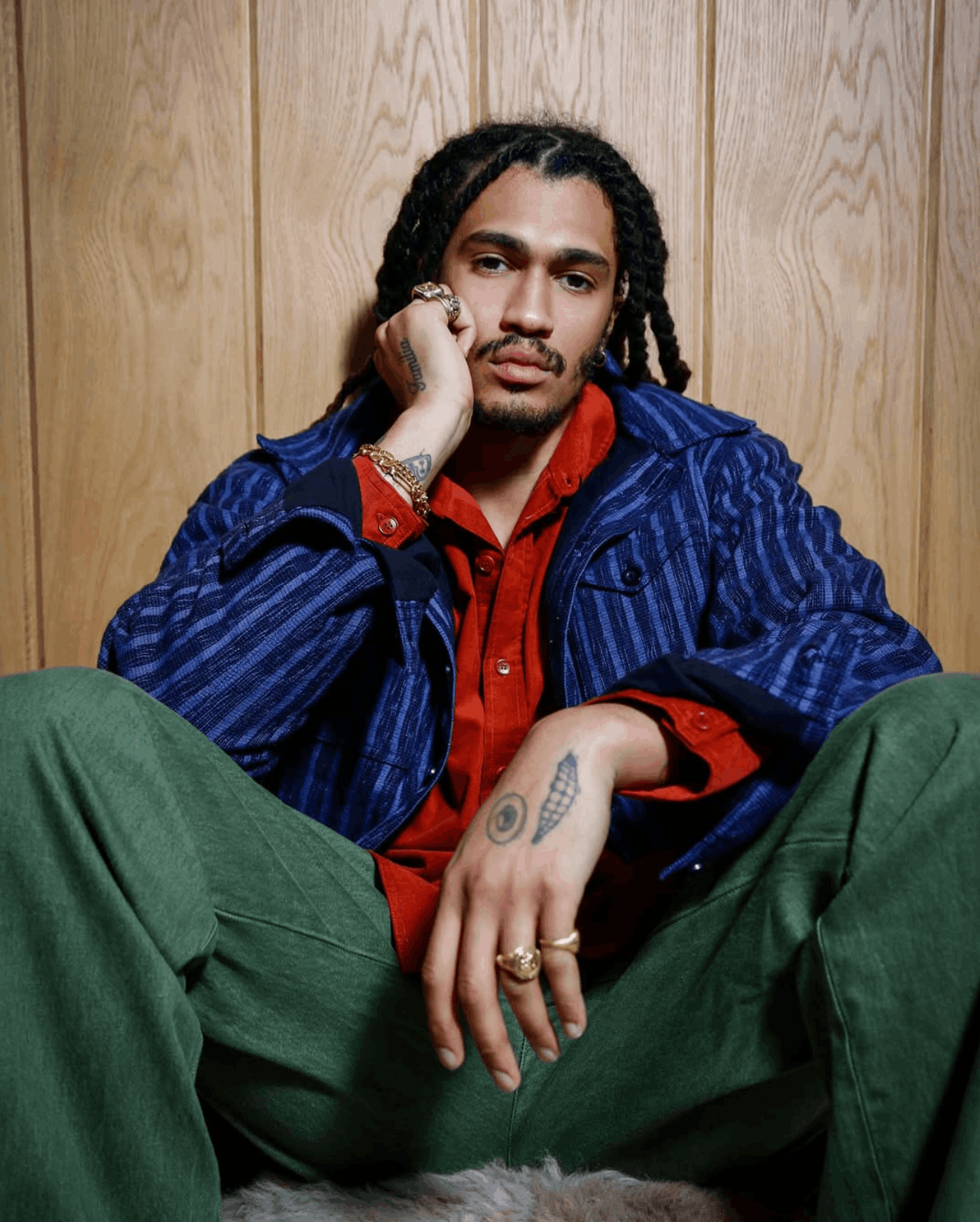 Our Buyers Journey: Spotlight on the Menswear selection on Who’s Next’ January 2025 Edition
Our Buyers Journey: Spotlight on the Menswear selection on Who’s Next’ January 2025 EditionFrom the 18th to the 20th of January 2025 at Porte de Versailles, Who’s Next will open its doors to celebrate the creative spectrum of menswear. More than just a fashion event, it offers an immersive experience in a world where creativity and craftsmanship boldly converge with innovation in a uniquely vibrant setting.
-
 Focus on our Ready-to-Wear selection for the January 2025 edition of Who’s Next
Focus on our Ready-to-Wear selection for the January 2025 edition of Who’s NextFrom the 18th to the 20th of January 2025, Who’s Next will showcase its creative spectrum in Paris at Porte de Versailles, offering an unmissable event for fashion enthusiasts, industry professionals, and designers.
-
 The Good Goods: A Media Platform Redefining Perspectives on IMPACT and NEONYT Paris
The Good Goods: A Media Platform Redefining Perspectives on IMPACT and NEONYT ParisSince its creation in 2017, The Good Goods has established itself as a unique media and creative studio, dedicated to transforming the fashion, textile, and luxury industries.
-
 Stephen Jones Illuminates the Beyond the Noise Space at Premiere Classe
Stephen Jones Illuminates the Beyond the Noise Space at Premiere ClasseDuring the latest edition of Premiere Classe, held in the heart of the Carrousel du Louvre, one of the event's most anticipated moments was the talk by Stephen Jones, the iconic British milliner.
-
 "The State of Nature": Emerging designers reshape tomorrow’s fashion
"The State of Nature": Emerging designers reshape tomorrow’s fashionIn the vibrant setting of the Beyond the Noise space at Premiere Classe, a talk hosted by Mixte Magazine captivated the audience with an audacious theme: how the new generation of designers is reshaping fashion by reconnecting with nature and craftsmanship.
-
 Vuqu leather goods: elegance and urban practicality
Vuqu leather goods: elegance and urban practicalityFounded by sisters Fazla and Eda Topbaş, Vuqu is a Turkish leather goods house based in Istanbul that skillfully combines elegance and functionality.
-
 Ten. jewelry: the subtle balance between Nature and Geometry
Ten. jewelry: the subtle balance between Nature and GeometryFounded by Japanese designer Akane Horikami, Ten. has become a go-to brand for those seeking a blend of nature, minimalism, and contemporary elegance. At this fifth participation in Premiere Classe, Ten. continued to captivate with a collection exploring fluid lines while introducing more geometric elements.
-
 RFB leather goods: the art of empowerment
RFB leather goods: the art of empowermentAt her debut showing at Premiere Classe, Raquel Figueroa Borque, founder of the leather goods brand RFB, shared her journey, inspirations, and vision for a sustainable, timeless, and meaningful approach to fashion.
-
 House of Mua Mua: craftsmanship expressed with humour
House of Mua Mua: craftsmanship expressed with humourFounded by Ludovica Virga, House of Mua Mua stands out with its playful, humour-filled approach to fashion. At this September’s edition of Premiere Classe, Ludovica presented her new collection, Happiness is a Summer in Italy, inspired by her summer holiday memories. This collection brilliantly reflects the brand’s DNA, combining light-heartedness, humour, and meticulous craftsmanship.
-
 Amambaih: an ethical and cultural vision through artisanal design
Amambaih: an ethical and cultural vision through artisanal designAmambaih, founded by Mariela Schwartz Montielle, represents a unique fusion of art, culture, and humanity. Originally from Paraguay, Mariella draws on her multicultural roots to realise a creative vision that goes far beyond simply crafting artisanal shoes and bags.
-
 Countryside Lifestyle: A Celebration of Rustic and Authentic Elegance at Who’s Next
Countryside Lifestyle: A Celebration of Rustic and Authentic Elegance at Who’s NextFrom 18 to 20 January 2025, the Who’s Next trade show at Porte de Versailles (Paris) invites you to experience the warm, bucolic charm of countryside living through a diverse selection of brands—ranging from iconic names to promising new talents with innovative and sustainable concepts.
-
 Why Relaunch a Brand? An Interview with Marie Mignon, Co-Founder of the Leather Goods Brand Soco
Why Relaunch a Brand? An Interview with Marie Mignon, Co-Founder of the Leather Goods Brand SocoAs the western aesthetic captivates designers, brands, and consumers, one French brand is riding the wave: Soco. Created in 1932, this “sleeping beauty” brand was revived three years ago, following a brief closure, thanks to the efforts of two passionate sisters-in-law who share the same first name. So the story of Soco is continuing under the stewardship of the “Maries Mignon.”
-
 Khailo Silver's Bijorhca Strategy
Khailo Silver's Bijorhca StrategyThe Turkish brand Khailo Silver has been offering modern and elegant jewellery for over ten years. With meticulous finishes inspired by fine and high jewellery, their premium designs, often adorned with Swarovski crystals or other precious and semi-precious stones, have made them internationally renowned.
-
 Coreterno: Perfumes and Candles Find Their Place at Who’s Next
Coreterno: Perfumes and Candles Find Their Place at Who’s NextFounded in 2015 by the Italian duo Michelangelo Brancato and Francilla Ronchi, Coreterno is a niche perfume brand whose name means “eternal heart” in Italian, and the brand creates unique candles imbued with esotericism. Their style is a blend of rock, almost punk aesthetics, and a mystical aura, forming an invisible bridge between the ancient and the modern.
-
 La Villa Beauté: Beauty & Wellness elevated at Who’s Next
La Villa Beauté: Beauty & Wellness elevated at Who’s NextFrom the 18th to the 20th of January 2025, Who’s Next will once again take over the iconic halls of Porte de Versailles in Paris, inviting visitors to explore the inspiring Villa Beauté space. A true intersection of beauty, wellness, and lifestyle, this innovative hub showcases the latest trends and technologies in an immersive, multi-sensory environment.
-
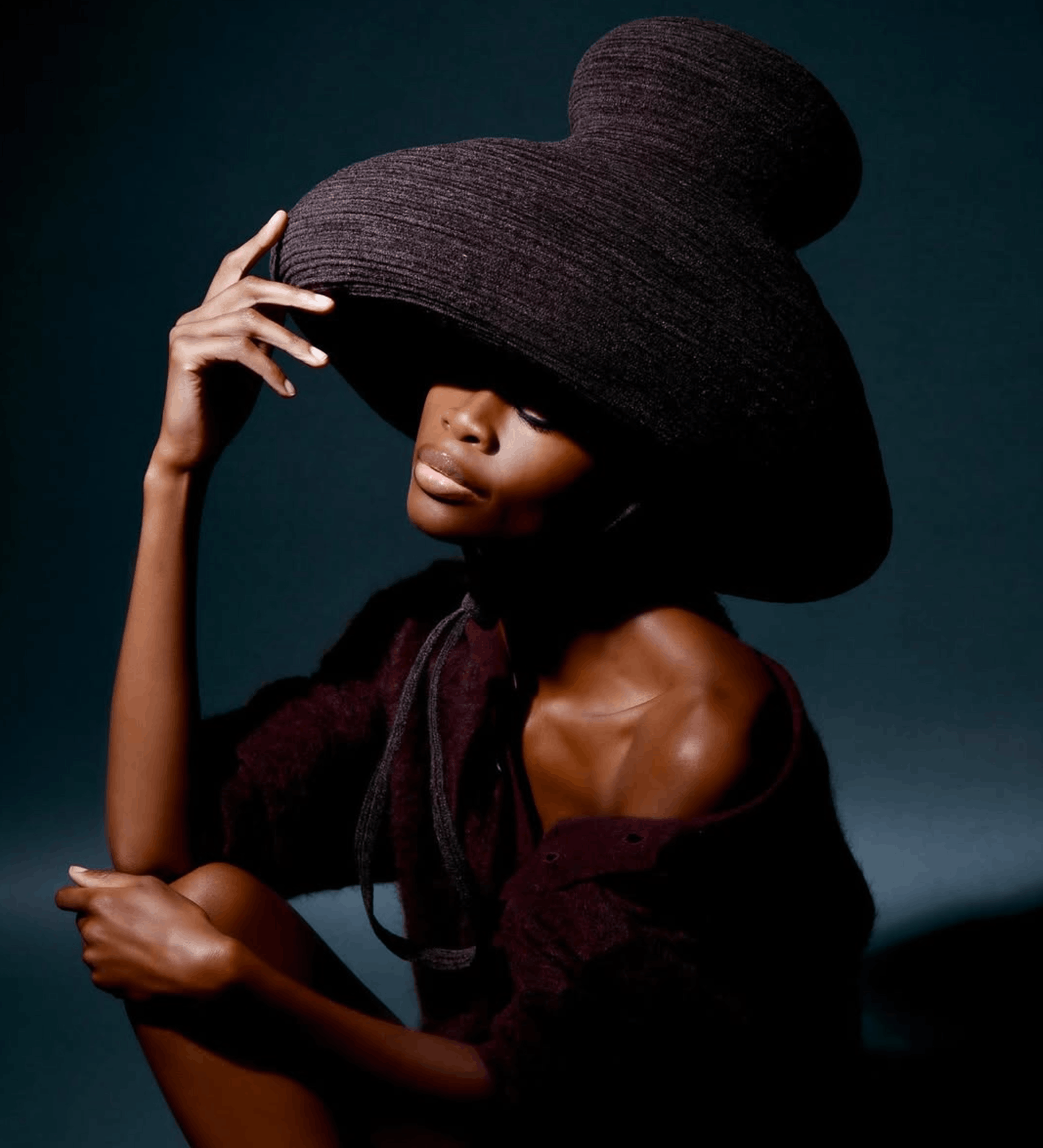 Esenshel: the boldness of conceptual hatmaking
Esenshel: the boldness of conceptual hatmakingBased in New York City, the hat brand Esenshel, founded and led by Rodney Patterson, embodies a unique approach to hat creation.
-
 Amina Galal: a committed and multicultural fashion presence at Premiere Classe
Amina Galal: a committed and multicultural fashion presence at Premiere ClassePresenting for the first time at Premiere Classe, Amina Galal represents a new generation of Arab designers who blend tradition and modernity with a personal, emotional touch.
-
 Getting to the 3-Year Milestone for a Fashion Brand: Thaïs Roblowski, Founder of Bobo Paris, Reflects
Getting to the 3-Year Milestone for a Fashion Brand: Thaïs Roblowski, Founder of Bobo Paris, ReflectsFor Thaïs Roblowski, fashion is a true calling, and after studying design and pattern-making at the Chambre Syndicale and interning at Thom Browne in New York and Mugler, she became a stylist at Cacharel and Alzaro.
-
 The Ulule Success Story: An Interview with Victoria Adjanohoun, Founder of Chou au Carré
The Ulule Success Story: An Interview with Victoria Adjanohoun, Founder of Chou au CarréFounded two and a half years ago, Chou au Carré offers upcycled accessories made in France using fabrics from major fashion houses. For founder Victoria, the brand was a natural fit.
-
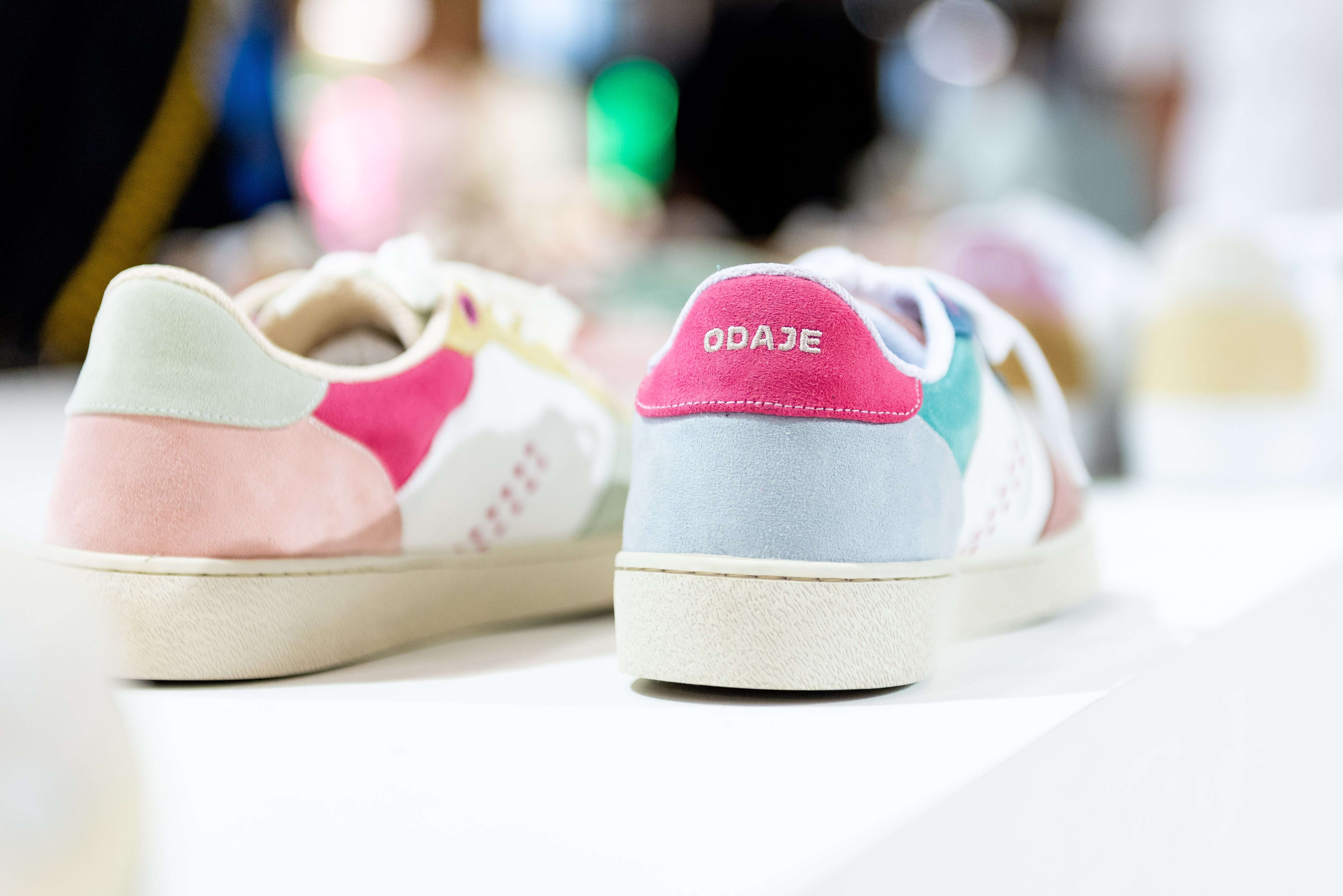 M. Moustache Becomes Odaje: A Look at a Rebranding Strategy
M. Moustache Becomes Odaje: A Look at a Rebranding StrategyModern and elegant shoes, a sustainable vision, and a manifesto for responsible and positive fashion. Welcome to Odaje. Meet Alexis, the Commercial Director of this footwear brand.
-
 Léa Theres Lahr-Thiele: A Rising Star in Sustainable Fashion at IMPACT and NEONYT Paris
Léa Theres Lahr-Thiele: A Rising Star in Sustainable Fashion at IMPACT and NEONYT ParisAmid the vibrant energy of emerging talents shaping the future of fashion, one designer stands out for her bold vision and unwavering commitment to sustainability. Léa Theres Lahr-Thiele, the young German prodigy and winner of the prestigious NEONYT Texpertise Sustainability Award, shines brightly this season with her meaningful and innovative approach to design.
-
 3 questions to Alexandra Bordin, Sofitel boutique manager
3 questions to Alexandra Bordin, Sofitel boutique managerSpecial boutique, special offer : a hotel buyer’s perspective.
-
 2000s Aesthetics Make a Grand Comeback at Who's Next
2000s Aesthetics Make a Grand Comeback at Who's NextFashion, an eternal cycle, is witnessing the resurgence of iconic brands that defined the 2000s alongside new players on the global scene, whose aesthetics reinterpret this pivotal decade in contemporary fashion. For the upcoming edition of Who's Next, taking place from 18 to 20 January 2025 at Porte de Versailles, Paris, we celebrate the return of these legendary labels as part of our exhibition.
-
 Softness and Winter Colours to Explore at Who's Next in January 2025
Softness and Winter Colours to Explore at Who's Next in January 2025As winter sets in, the collections showcased at our upcoming event shine with warm tones and comforting textures.
-
 Sac&Co, an Athenian Denim Brand
Sac&Co, an Athenian Denim BrandTimeless, artisanal, and sustainable: denim is reinvented at the Athenian brand Sac&Co.
-
 Comptoir 102 Concept Store on Premiere Classe
Comptoir 102 Concept Store on Premiere ClasseIn the vibrant atmosphere of Premiere Classe, Comptoir 102, a Dubai-based concept store, continues its pursuit of unique pieces, set against a backdrop of remarkable craftsmanship. Through the insightful lens of Stephanie Chesneau, Sales Director, the store shares its impressions of this edition, where each encounter uncovers unexpected treasures and stories waiting to be shared.
-
 Is TikTok killing Instagram ? A conference by the Fédération du Prêt-à-Porter Féminin at Who's Next
Is TikTok killing Instagram ? A conference by the Fédération du Prêt-à-Porter Féminin at Who's NextLast September, the Fédération Française du Prêt-à-Porter Féminin enhanced Who's Next with talks and workshops on digital marketing in fashion. Here's a look back at the ‘Did TikTok kill Instagram? Three experts in fashion and social media discuss community, authenticity, resilience and engagement.
-
 Asano Miyazaki : a French vision for the Japanese market
Asano Miyazaki : a French vision for the Japanese marketThe Parisian eye of Japanese department store Isetan Mitsukoshi tells us about her latest Who’s Next fashion crushes.
-
 Reinhard Plank: at the heart of unique and artisanal millinery
Reinhard Plank: at the heart of unique and artisanal millineryReinhard Plank (Founder and milliner), originally from Vipiteno (Italy) near the Austrian border, first studied design in Vienna before turning to millinery. "I started with hats in Vienna, and my first classic model was a great success," he says. Drawn to Florence's rich hat-making heritage, Reinhard chose this city to perfect his craft.
-
 Interview with Camille Pouvreau and Lucas Bouteille, Specialist Watch Buyers for Galeries Lafayette
Interview with Camille Pouvreau and Lucas Bouteille, Specialist Watch Buyers for Galeries LafayetteAt the latest edition of “Who’s Next,” we spoke with Camille Pouvreau and Lucas Bouteille, watch and jewellery buyers for Galeries Lafayette, about the burgeoning men’s jewellery market and the long-lasting nature of trends in the watch sector.
-
 Bijorhca: A Strategic Event for the Movado Group
Bijorhca: A Strategic Event for the Movado GroupA key player in the watchmaking industry since the 1950s, the American Movado Group initially established itself through the distribution of traditional Swiss brands. Over time, it expanded globally, broadening its portfolio to include contemporary designs and jewellery.
-
 Guglielmo Rotta: tradition and innovation in the service of a timeless classic
Guglielmo Rotta: tradition and innovation in the service of a timeless classicFounded in 1954 by the current owner’s parents, Antonio, the Italian shoe brand Guglielmo Rotta is the perfect example of a family craftsmanship that has evolved while remaining true to its roots. At this edition, the brand presented a collection that perfectly illustrates its commitment to quality, timelessness, and Italian craftsmanship.
-
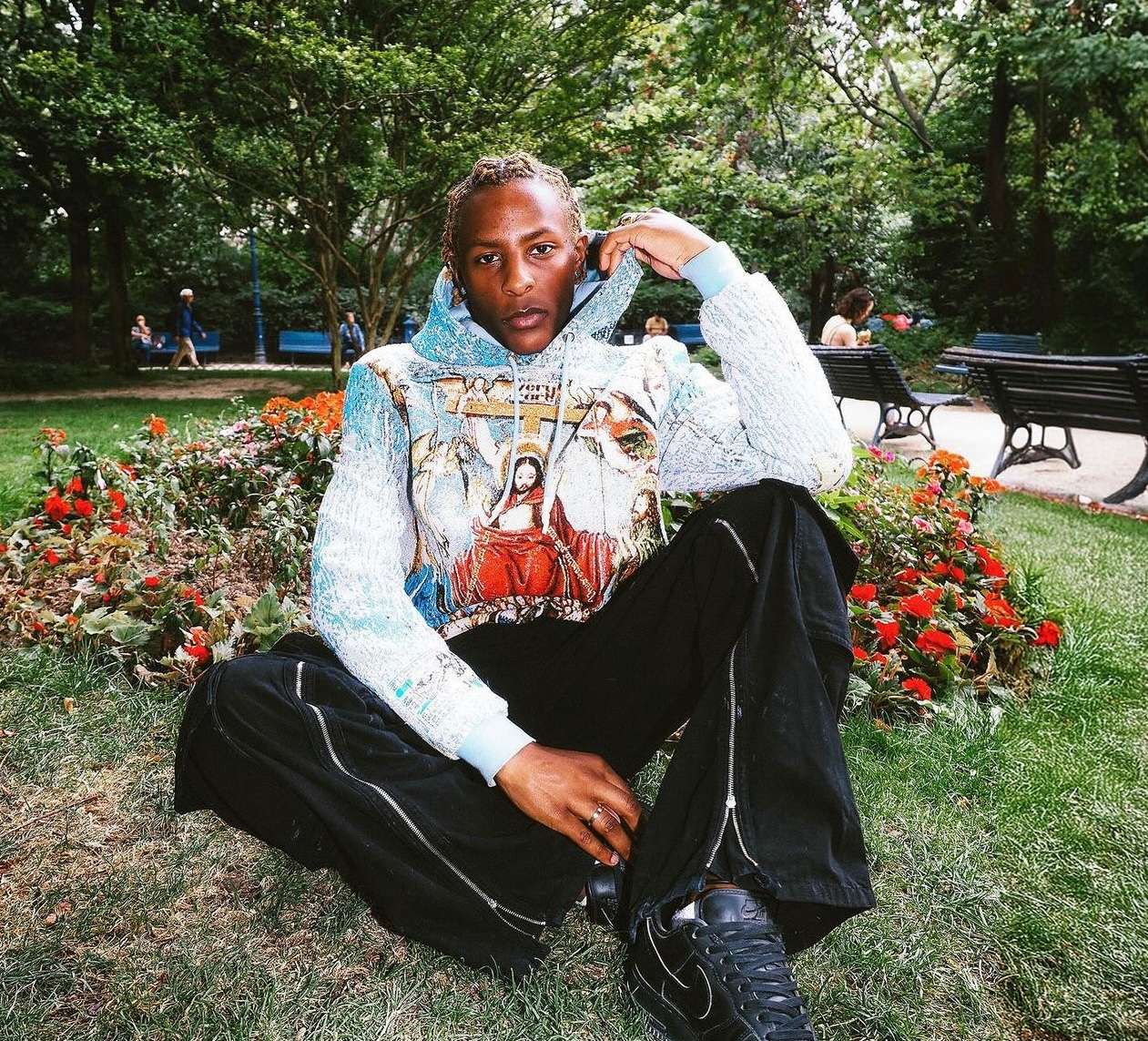 The ‘Street Couture’ of Very Rare: Between urban aesthetics and engaged communities
The ‘Street Couture’ of Very Rare: Between urban aesthetics and engaged communities“Streetwear but make it Couture!” Very Rare, a lifestyle and ready-to-wear brand under the direction of Raf Reyes, embodies an avant-garde vision of streetwear through what the designer defines as ‘street couture’. Born during the 2020 health crisis, this family-run brand, founded with his older brother, stands out for its fluid silhouettes, intricate details such as embroidery, flocking, and graphic prints, and strong influences from 90s subcultures.
-
 Meeting with BSL: inspiring perspectives towards international growth
Meeting with BSL: inspiring perspectives towards international growthFor over 15 years, BSL, a Turkish ready-to-wear brand, has made a name for itself in the fashion market in Turkey, with stores in the country’s major cities such as Istanbul, Izmir, Ankara, and Antalya. Initially focused on its own retail outlets, BSL adopted a new strategy last year: expanding its distribution network across Europe.
-
 Braccialini: the florentine heritage of whimsical and colourful leather goods
Braccialini: the florentine heritage of whimsical and colourful leather goodsReinterpreting its heritage Braccialini, the iconic Italian brand from Florence, is celebrating its 70th anniversary this year. "We were born in Florence, and the natural and architectural beauty of Tuscany greatly inspires our creations," shares Daniela, the brand's sales agent.
-
 Julie Sion and the Gatsby Soudure workshop shine at BIJORHCA
Julie Sion and the Gatsby Soudure workshop shine at BIJORHCACraftsmanship at the heart of jewellery creation: a self-taught journey and the rise of gatsby soldering workshop Fifteen years ago, Julie Sion made her mark in the world of costume jewellery with a unique and passionate approach. "I stumbled into this profession a bit by chance," she admits. Self-taught, her first steps into creation were through a craft-focused approach, before collaborating with French workshops to ensure ethical and high-quality production for her eponymous brand. These collaborations led her to develop a strong and engaged community, not only around her creative project but also through the human values she upholds in her work.
-
 Temp's bags: From Seoul to Paris – Sustainable and committed leather goods
Temp's bags: From Seoul to Paris – Sustainable and committed leather goodsDuring their debut at Who’s Next, the South Korean brand Temp’s, led by Joanne Jeon Eun-jung, captured attention with its deep commitment to sustainability, combined with a modern and conceptual approach to design.
-
 Interview with Pamela Kemmat and Nadège Thevenon, Founders of Paloma Rouen Boutique
Interview with Pamela Kemmat and Nadège Thevenon, Founders of Paloma Rouen BoutiquePamela Kemmat, the influencer and founder of the Pamela Rouen boutique, and her mother Nadège Thevenon, founder of the Paloma Rouen boutique, share their thoughts on “Who’s Next,” an event they regard as the beating heart of the fashion industry.
-
 Abasiekeme Ukanireh: Founder of Eki Kere and a “Who’s Next” Favourite
Abasiekeme Ukanireh: Founder of Eki Kere and a “Who’s Next” FavouriteMeet Abasiekeme Ukanireh, the visionary founder and artistic director of Eki Kere, a Nigerian brand that has captivated audiences with its unique creations, showcasing vibrant raffia-based designs.
-
 Winners of the ANDAM Prize at Premiere Classe
Winners of the ANDAM Prize at Premiere ClasseSince 1989, the ANDAM (National Association for the Development of the Fashion Arts) has played a crucial role in promoting young talent within the fashion industry. Supported by both institutional and private partners, including the Ministry of Culture and industry giants like Balenciaga, Hermès, and Chanel, ANDAM serves as a unique springboard for emerging designers. This year, in conjunction with Premiere Classe, which celebrated ANDAM’s 35th anniversary last March at Maxim's, the prize winners will once again showcase their creations in the ANDAM space at the Carrousel du Louvre from 28th to 30th September.
-
 Premiere Classe celebrates emerging creativity alongside the winners of the Hyères Festival
Premiere Classe celebrates emerging creativity alongside the winners of the Hyères FestivalIn the vibrant world of creative industries, the Hyères International Festival of Fashion, Photography, and Accessories has been a guiding light for emerging talents since 1986. This year, three of the winners from its 38th edition join the selection at the Premiere Classe trade show, a prestigious platform for up-and-coming designers.
-
 The Brut Icon Selection at Premiere Classe: An Ode to Creativity
The Brut Icon Selection at Premiere Classe: An Ode to CreativityThe Premiere Classe trade show is dedicated to showcasing creativity and offering turnkey solutions to highlight the essential trends of the season. Renowned for its ability to identify and present emerging creative scenes, the show supports brands in their growth, establishing itself as a key reference for buyers and designers alike.
-
 New Business Solutions at Who's Next: A breath of innovation for the commerce of tomorrow
New Business Solutions at Who's Next: A breath of innovation for the commerce of tomorrowIn the upcoming edition of the Who's Next trade show, taking place from the 8th to the 10th of September, we are excited to present a remarkable selection of new business solutions. Companies from across France and beyond are bringing their unique and innovative visions to the contemporary commercial landscape, blending advanced technology, refined aesthetics, and sustainable commitments. Through their services, these market players highlight innovative, responsible, and transformative practices for the fashion landscape industries.
-
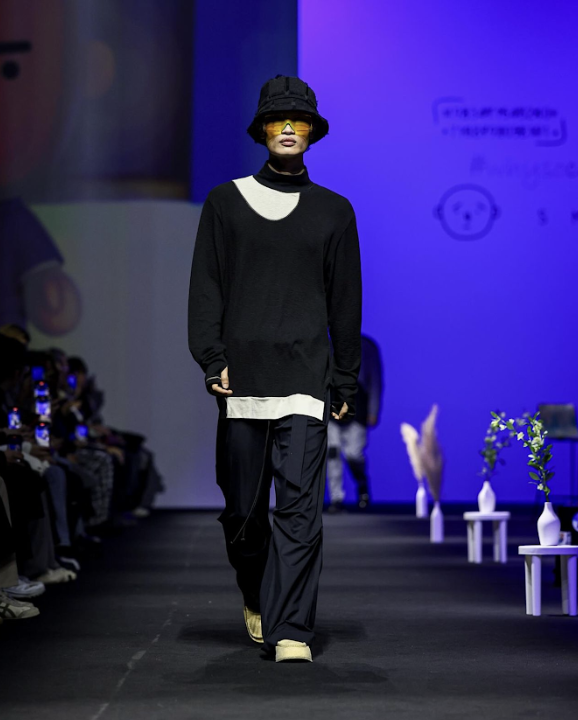 WHAT’S UP - Where culture and community intertwine
WHAT’S UP - Where culture and community intertwineAt the prospect of the upcoming edition of Who’s Next trade shows, we are delighted to once again showcase the remarkable selection of the What’s Up space.
-
 Who's Next as seen by Loïc Prigent
Who's Next as seen by Loïc PrigentWho's Next? The great thing about the initial chaos of Who's Next is that it has lasted.
-
 A breath of fresh air for jewellery at Bijorhca
A breath of fresh air for jewellery at BijorhcaIn anticipation of the upcoming BIJORHCA trade show, held alongside Who's Next from the 8th to the 10th of September at Porte de Versailles, we are delighted to present a selection of new brands you won’t want to miss. A must-attend event for the jewellery industry since 1930, Bijorhca returns this year with a fresh wave of inspiration for jewellery enthusiasts and professionals alike.
-
 Treaptyque: A Journey Through Design
Treaptyque: A Journey Through DesignFounded in 2021 by Germain Provot Lorenz, Treaptyque is far more than just a showroom—it's a vibrant and unique space dedicated to curating exceptional pieces.
-
 Korea upcycle: KEIA collective's newest South-Korean pavillion
Korea upcycle: KEIA collective's newest South-Korean pavillionKEIA (Korea Environmental Industry Association) advocates for eco-conscious initiatives among creative industries in South Korea and abroad notably. Since 2023, the association has been exhibiting on our IMPACT trade show along with Who’s Next. Their project revolves around supporting and promoting sustainable practices and key players of Korea’s industries on an international scale.
-
 Hispanic Escape: Focus on Our Spanish Jewellery Designers
Hispanic Escape: Focus on Our Spanish Jewellery DesignersBIJORHCA returns alongside Who's Next to transport you from the urban buzz of Barcelona to the carefree summers of the Balearic Islands. Bright and poetic, Spanish jewellery celebrates its artisanal and cultural heritage through both contemporary and timeless designs.
-
 Smiley returns to Impact with Future Positive
Smiley returns to Impact with Future PositiveFuture Positive by Smiley is back with a space dedicated to its fashion collaborations with brands such as Eastpak, Rainkiss, Jules, Snocks, Saturday Society, Hoptimist and Small World, in the IMPACT area of Who's Next.
-
 Bijorhca, the jewelry trades in the spotlight with Savoir pour Faire
Bijorhca, the jewelry trades in the spotlight with Savoir pour FaireDiscover the jewelry trades at Bijorhca with Savoir pour Faire, from January 20 to 22, 2024. Bijorhca will be showcasing know-how in Hall 4, where some 150 brands and suppliers are expected.
-
 Focus: 5 hair accessory brands to discover at Who's Next
Focus: 5 hair accessory brands to discover at Who's NextFrom January 20 to 22, Who's Next presents its hair fashion selection.
-
 Freaks From Designers
Freaks From DesignersWho's Next presents its new edition, from January 20 to 22, 2024.
-
 A Jewel Made In Greece
A Jewel Made In GreeceImaginé et créé en 2013, le collectif A Jewel Made In Greece présente et promeut le savoir-faire joaillier grec.
-
 Le We Love Green Market by Who's Next - juin 2017
Le We Love Green Market by Who's Next - juin 2017 -
 Janvier 2017 en images
Janvier 2017 en images